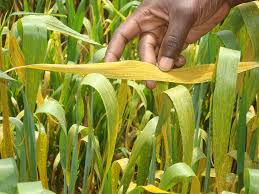FAO calls for International collaboration on wheat rust
The Food and Agricultural Organization (FAO), a United Nations agricultural agency has called for International collaboration on wheat rust to curb threat to global supplies.
According to studies produced by scientists in collaboration with FAO, wheat in Africa, Asia and Europe is increasingly threatened by fresh groups of wheat rust.
Key Facts
- The studies have showed emergence of two new groups or races of both yellow rust and stem rust in various regions of the world.
- They highlight urgent need for early detection and rapid action to keep the wheat rust under control which spread rapidly over long distances by wind.
- If not detected and treated on time, they can turn a healthy looking crop, only weeks away from harvest, into a tangle of yellow leaves, black stems and shriveled grains.
- Wheat is a source of food and livelihoods for over 1 billion people in developing countries. Some of the most vulnerable regions are also the highest producers of wheat.
- Northern and Eastern Africa, the Near East, and West, Central and South Asia alone account for some 37% of global wheat production.
What is Wheat Rust?
Yellow rust is a fungal disease which turns leaves yellowish and stops the photosynthesis. It is caused by the Magnaporthe oryzae fungus and was discovered in Brazil in 1985. The fungus attacks the leaf of the crop and eats its chlorophyll, thereby affecting the plant’s growth. It can cause up to 20% yield loss. In recent times, due to temperature rise caused by climate change has contributed to the spread of the fungus.
Month: Current Affairs - February, 2017


